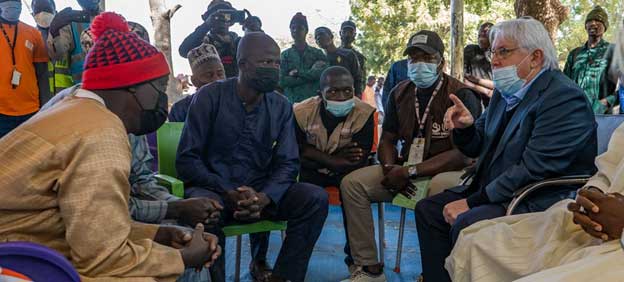[ad_1]
Creator: David Dapice, Harvard College
Vietnam was an financial star in 2020, because it managed to regulate the COVID-19 pandemic whereas sustaining one of many highest development charges on this planet. Whereas GDP development was solely about 3 per cent, about half of its regular 6–7 per cent development fee, most international locations confronted falling ranges of output.
![]()
However the authorities — maybe assured that its take a look at, observe and quarantine measures might proceed to regulate the virus — was gradual in procuring vaccines. When the Delta variant proved to be extra transmissible and never so simply managed, there was a scramble to obtain vaccines. This effort grew to become extra necessary after Omicron emerged.
Because of this, 2021 was a troublesome yr as shutdowns made life troublesome and GDP slowed to 2.6 per cent. Rising provides of vaccines finally allowed extra regular exercise in the previous few months of 2021. Vietnam’s GDP shrank 6 per cent within the third quarter earlier than bouncing again within the fourth quarter.
The commerce surplus, a supply of previous stress with the US, halved in 2021 to a modest US$4 billion. The nominal change fee of the Vietnamese dong in opposition to the US greenback modestly appreciated and overseas change reserves grew to 4 months of imports. Inflation was lower than 2 per cent.
The large query now could be if these developments will tarnish Vietnam’s hard-won popularity as a dependable provider and different to China for manufactured exports ? Regardless of manufacturing unit closures, exports rose 19 per cent in 2021 to an astonishing US$336 billion — whereas GDP was solely US$271 billion in 2020 and grew solely barely in 2021. The excessive degree of overseas direct funding (FDI) didn’t develop nor shrink a lot. The speedy enhance in vaccinations — about 60 per cent totally vaccinated by early 2022 — means that manufacturing unit closures will probably be modest in 2022.
However labour shortages could also be extra of an issue, as staff concern one other spherical of manufacturing unit closures and journey restrictions. There have been troubles hiring even in 2019 as labour power development slowed. International pressures to scale back danger and enhance resilience in provide chains are one other headwind. Whereas the momentum of previous FDI commitments will maintain export development excessive in 2022, there are questions on later years.
One facet impact of Vietnam’s speedy export development has been a lag in home value-added in exports. A lot of the work has been easy meeting reasonably than the event of a dense community of provider industries that will make the FDI ‘stickier’ as wages rise and labour provides tighten. The progress on this space has come from FDI suppliers following their ‘mom’ corporations, not domestically owned corporations.
The COVID-19 pandemic slowed progress on this entrance, as fewer new enterprises opened and lots of extra quickly closed. Many corporations which are nonetheless in enterprise are financially weaker and can want time to build up sources to enhance equipment, coaching and advertising. Alternatively, home corporations managed to extend funding by 7 per cent in nominal phrases whereas authorities and FDI corporations noticed declines. That is stunning given the 1.2 per cent actual development in service exercise and 4 per cent actual development within the business.
Prospects for 2022 are good. As factories and companies strategy regular, there will probably be a leap in output, a lot as China had in early 2021. Most projections are for six–7 per cent actual GDP development. Tourism ought to begin to recuperate from its over 95 per cent decline from 2019 ranges. Exports ought to develop about 15 per cent and the commerce stability will stay modestly optimistic. Inflation will stay low and the dong will proceed to understand barely in opposition to the US greenback. This projection assumes that China’s border closures will ease, permitting extra regular commerce flows than in 2021.
Whereas financial relations with the US have improved, the persevering with crackdown on unbiased journalists and on-line commentary might create tensions. This might affect future FDI flows and push Vietnam to diversify from its reliance on easy meeting FDI — a pattern brought on by labour shortages and rising wages. It might additionally restrict the influx of high-tech FDI that will enable Vietnam to remodel its economic system into ‘Business 4.0’ and enhance productiveness.
The standard of FDI must be a spotlight, together with extra efforts to improve schooling and coaching. Reliance on bigger and well-connected home corporations will possible enhance, with unsure outcomes. Whereas administration on the high is dynamic, there may be the danger of taking up greater than will be simply digested. Vulnerability to cyber-attacks is one other urgent subject.
One other subject is the persevering with modification of PDP-8, the brand new plan for increasing electrical energy manufacturing. It has modified from a balanced strategy with extra renewable vitality to at least one closely favouring coal. Plans to extend transmission have been scaled again and this can harm any FDI in inexperienced vitality — certainly, photo voltaic vitality development has been capped in 2022. This alteration is just not in line with Vietnam’s COP26 declarations.
Vietnam’s GDP per capita in PPP phrases exceeded US$11,000 per capita in 2021. This can be a big acquire from 2000 however nonetheless leaves it poorer than a lot of the bigger ASEAN economies and going through necessary environmental issues within the Mekong Delta and cities. Rising wages relative to productiveness, pressures to reshore exports and falling tech scores for its staff pose medium-term challenges for Vietnam.
David Dapice is a Senior Economist within the Ash Middle for Democratic Governance and Innovation on the John F Kennedy Faculty of Authorities, Harvard College.
This text is a part of an EAF particular characteristic sequence on 2021 in assessment and the yr forward.
[ad_2]
Source link
















